Maryam Jafri. Welcome to My Age of Anxiety

Maryam Jafri. Welcome to My Age of Anxiety
Dal 15 April 2017 al 15 April 2017
Modica | Ragusa
Luogo: Laveronica Arte Contemporanea
Indirizzo: via Grimaldi 93
E-Mail info: info@gallerialaveronica.it
Sito ufficiale: http://www.gallerialaveronica.it
Laveronica Arte Contemporanea is pleased to present “Welcome to My Age of Anxiety”, the first solo exhibition in Italy by Maryam Jafri. The exhibition investigates soft technologies of power invoking self-care at the heart of their disciplinary apparatus, forming what Jafri calls a global Military-Industrial- Wellness complex.
First however, at the entrance Jafri reprises her 2009 work Nogales, in response to the current political climate in the United States. Nogales pairs a lightbox image of the walled town of Nogales, divided along the US/Mexican border with an edited audio recording of Ronald Reagan's famous speech at the Berlin Wall. " Jafri has edited out specific names - Berlin, Europe, Mr. Gorbachev --but kept the rest of the audio recording intact.
At the heart of the exhibition are two recent sculptures, American Buddhist (2016) and Meditation Square (2016). Resembling meditation altars, the two sculptures explore the use of meditation as a soldier training device by the US Army. Unlike the traditional view of basic training, immortalized most notably by Kubrick’s film Full Metal Jacket in which American soldiers prepare for combat under the training of a sadistic taskmaster, these new techniques deploy a more holistic approach. American Buddhist displays a video of a soldier meditation session on a US Army base in Iraq. The video is a public domain video sourced directly from the US Army. Around and below the flat panel monitor are several plush toys of stuffed Buddhas meant for children, garlands of fake orange flowers and a framed text panel. The second sculpture, Meditation Square features a 60 cm bronze replica of the Saddam Hussein statue in Firdos Square being toppled in April 2003 during the Iraq war. Necklaces of wooden prayer beads are draped around the statuette ́s neck, an allusion to both the ropes seen in the news photographs and to Saddam’s execution by hanging. Below the statue, on the two lower levels of the altar, are eight framed photographs sourced from various US Army websites, showing images of soldiers meditating, often with eyes closed and in lotus position as well as one group photograph of soldiers reposing in the aptly named Corpse pose. Meditation Square literalizes the promise of mind over matter, taking it to its absurd but logical conclusion – the soldiers appear to be destroying the bronze statue with the powers of their own optimized, meditation-fueled brains.
Also on view is the photo series School/Hospital/Prisons (2012), focusing on School, Hospital and Prison theme rooms for S/M role-play. The rooms function as a training ground where institutional discipline is fused with personal fantasy, psychologically internalized and reenacted.
Rounding out the exhibition in the main space is a new series of sculptures called Self-care (2017) on the use of alternative healing systems such as acupuncture, cupping, and yoga. Silicone feet pierced with acupuncture needles, a toilet paper holder with a cut up yoga mat and a Muslim Buddha praying among newspaper detritus are some of the works in this latest series.
Finally, in the cave (or whatever u call that space) Jafri presents her film Avalon (2011). In 2001, in an unnamed Asian country, a man known as F.R., was given $700 USD by his father and told to make something of himself. F. R. founded a multi-million dollar clandestine company that secretly exports fetish wear to the West. The dozens of mostly female workers believe themselves to be sewing body bags for the US military, jackets for psychiatric patients and props for circus animals. Avalon combines documentary footage from the factory with staged scenes of a client at a S/M dungeon undergoing a role-play session purporting to provide intense psychological experiences. Avalon takes the story of F.R. as the point of departure for a complex meditation on the links between affect, labor and commodity under contemporary global conditions. Juxtaposing the world of the stage with the world of the factory, and performativity with production, the film probes the different but interlocking forms that work takes today, from the production of goods to the production of subjectivity.
Maryam Jafri lives and works in Copenaghen and New York.
For the past fifteen years she has worked across varied media including expanded sculpture, video, and photography, with a specific interest in questioning the cultural and visual representation of history, politics, and economy. Her practice is informed by a research-based, interdisciplinary process that draws upon diverse traditions from literature and theater to pop and conceptual art. Research topics ranging from the production of desire versus the production of goods (Avalon, 2011), the politics of food (Mouthfeel, 2014) to photo/text works focusing on the digitalization of the photographic image and its consequences for issues as diverse as cultural memory and copyright law (Getty vs. Ghana, Corbis vs. Mozambique, 2012) to sculptural installations focusing on the impact of graphic design, branding, and display on our everyday habits (Generic Corner, 2015, Product Recall: An Index of Innovation, 2014-2015).
Very often the research for one work leads to the starting point for another work in a different media, such as the sculptural installation Product Recall: An Index of Innovation (2014-2015) that grew out of initial research for my video Mouthfeel (2014). The two works stand independently of one another but also constitute a dialogue between themes, media, and approaches. Mouthfeel, in which she acts, direct, and write, harnesses the language of soap operas to probe global consumer culture. Product Recall: An Index of Innovation combines objects, texts, and photographs of failed products in a dark, pop-infused exploration of postwar American consumer culture. Her most recent work, Generic Corner (2015), focuses on another neglected aspect of American consumer culture – the once widespread, now mostly forgotten black and white generic items that graced supermarkets across the country in the late 1970s and 80s. Independence Day 1934-1975 (2009-ongoing) is fueled by her interest in questions of heritage and the archive, and the role of photography in the formation of national narratives during the process of decolonization in Asia, the Middle East, and Africa. Her works often bring together both found and original material, whether in installation or moving image formats. In her video Avalon (2011) staged scenes were combined with documentary footage to offer a meditation on the links between affect, labor, and commodity under contemporary global conditions.
Above all her interdisciplinary art practice is grounded in an engagement with the formal and conceptual qualities of each media, periods of extensive research and planning, and the mysterious but crucial role played by forces that lie outside deliberation and preparation such as accident, chance, and intuition.
Notable solo exhibitions include at Vanabbe, Eindhoven, Tabakalera, San Sebastian, Kunsthalle Basel, Betonsalon (Paris), Gasworks (London) and an upcoming solo show at Contemporary Art Gallery of Vancouver. Recent and upcoming biennials include Sao Paolo Biennial, Venice Biennial (Belgian Pavilion), Manifesta 9, Shanghai, Taipei, Bucharest, Thessaloniki, and Quebec City Biennials among others. Recent group exhibitions include “Fassbinder & Contemporary Video Art” at Martin Gropius Bau, “Past is Present: Murals” at Museum of Contemporary Art Detroit, and “Meepting Points 9” at Beirut Art Center. ” My work has been reviewed in Art Forum, Frieze, Mousse, Camera Austria, Art Papers, Texte Zur Kunst, Kunstforum, and elsewhere.
SCARICA IL COMUNICATO IN PDF
COMMENTI

-
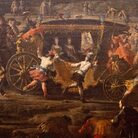 Dal 20 December 2025 al 20 April 2026
Caserta | Reggia di Caserta
Dal 20 December 2025 al 20 April 2026
Caserta | Reggia di Caserta
Regine: trame di cultura e diplomazia tra Napoli e l’Europa
-
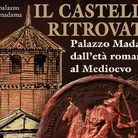 Dal 19 December 2025 al 23 March 2026
Torino | Palazzo Madama - Museo Civico d’Arte Antica
Dal 19 December 2025 al 23 March 2026
Torino | Palazzo Madama - Museo Civico d’Arte Antica
Il castello ritrovato. Palazzo Madama dall’età romana al medioevo
-
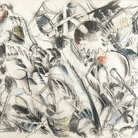 Dal 17 December 2025 al 19 January 2026
Roma | Palazzo della Cancelleria
Dal 17 December 2025 al 19 January 2026
Roma | Palazzo della Cancelleria
De Humana Mensura di Linda Karshan
-
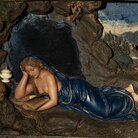 Dal 18 December 2025 al 12 April 2026
Firenze | Gallerie degli Uffizi
Dal 18 December 2025 al 12 April 2026
Firenze | Gallerie degli Uffizi
Cera una volta. Sculture dalle collezioni medicee
-
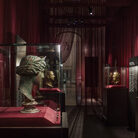 Dal 11 December 2025 al 9 April 2026
Firenze | Museo Archeologico Nazionale di Firenze
Dal 11 December 2025 al 9 April 2026
Firenze | Museo Archeologico Nazionale di Firenze
Icone di Potere e Bellezza
-
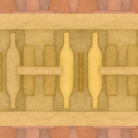 Dal 11 December 2025 al 11 January 2026
Roma | Palazzo Esposizioni Roma
Dal 11 December 2025 al 11 January 2026
Roma | Palazzo Esposizioni Roma
Giorgio Morandi nella Collezione Eni. Un viaggio attraverso la storia culturale del cane a sei zampe e l’eredità di Enrico Mattei


